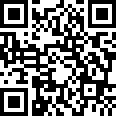Tracking and control of each unit of production
To discuss the preliminary concept of the Crankshaft #1 solution (select a specific model).
Crankshaft #1 is selected as the main product for developing the technical specifications and updating process charts, modeling, selecting technologies, tools, and marking methods that ensure control and traceability of micro-batches down to one unit of production.
In the process of developing the technology for tracking quality and quantity, it will be determined (technologist + economist + suppliers of marking solutions) which specific products it will be advisable to account for 1 unit, which in the form of sets (packages) or batches (for tracking the quality of batches).
Accounting for quantity and weight (weight balance) are integral characteristics of quality control of product manufacturing.
Marking will be added to the product manufacturing technology as a technological part ensuring tracking of quality and quantity at all stages of production and operation of the product. For products already manufactured, from the production assignment to write-off and disposal at the customer's. For new products, from design taking into account the labeling requirements for traceability of quality and quantity during production and operation.
The economic module is an operational calculation of the cost of production, calculation of balances by storage locations in monetary terms (raw materials, work in progress, finished products) is added only after accounting by physical quantities has been fully debugged: pieces, weight, quality analysis, accounting of technological operations and working hours (by employees), waste (either operational or calculated according to process maps).
Product labeling is a set of solutions that ensure tracking of the quality and quantity of each unit of production. As such, a "single label" does not exist.
The development of the technology for tracking the quality of each unit is performed on: Crankshaft No. 1 (we will select a specific model). After preliminary development, pilot and industrial operation of the full production cycle for one model, the process charts for all other types of the enterprise's products will be changed.
Metal marking for automatic identification is a fairly complex technological task. Starting with the fact that labels for marking are made from various types of raw materials and adhesive layer. Types of labels are selected for the corresponding surface and material. There are specialized labels, for example Brady THT-18-486-3 for marking corrugated metal. This label is made of metallized polyester B-486 with a particularly aggressive adhesive and a special Brady R-4300 ribbon is used for printing. Also, various types of direct marking DPM (from English Direct Part Marking - direct component marking) are used for automation of metal product identification. It can be impact, laser, drawing, etching, automatic during molding (DISA Tag).
To automate the reading of DPM marking, it is necessary to use specialized scanners, which may not be cost-effective. For this reason, it will be necessary to analyze the entire production cycle to determine where inexpensive marking using labels and bar codes can be used, and where direct marking or visual recovery by number must be used.
Bar and QR codes
The use of several coding technologies for automatic identification allows you to reduce the overall cost of implementing an operational accounting automation project, as well as reduce the cost of maintaining the system. It makes sense to equip stationary accounting and control points with scanners for working with linear bar codes. In places where mobility and flexibility are needed, but there are no special requirements for the speed of work, you can keep records and control using QR codes (a smartphone is enough to work with them).

For most stationary metering points, it is better to use linear bar codes. This allows you to cheaply equip many workstations at once. The video shows an example of accounting for the movement of product packages from a warehouse to a car. Each package has an individual number, plus the weight of each pack is taken into account - the number of shipped units is calculated and the weight is summed up.
Important! The label design should include not only a bar code, but also plain text with a number. So that you can either enter the code manually (as cashiers sometimes do in stores) or restore the label from the program.
The video below shows the marking of packages during weighing. This marking is performed before moving the products from production to the warehouse. The general accounting scheme is as follows: raw materials are poured into the extruder (via electronic scales), for example 6 tons of granules, and then we wait for data on the quantity and total weight of all packages (minus losses and waste) from the marking section. Piece-weight control allows us to balance by weight: poured 6 tons of granules, received 5.5 tons of products in the amount of 680 pieces of packages.
In the case of metal casting, there are difficulties with the marking of castings. Here, we will need technological and design development of marking technologies, the possibility of incorporating them into the technological process, and also ensuring economic indicators. In order to be able to “restore” the label, it is necessary to select a technology for applying an individual number during casting.

If the label for scanning is damaged in some area, it can be restored by entering a digital code on the keyboard or touch screen. The system records “marking restoration” and we can track the product by barcode.
During mechanical processing on machines, the employee scans the label before installing it in the machine and the system automatically generates a label for him after work. In fact, while the part is being processed on the machine, the label for marking after mechanical processing is already printed in the printer. Thus, when the part moves between machines, we get a chain: who, when and for how long processed it. The quality control department reports with what result: ok, rework or defective.

Barcode scanning takes into account not only products, but also employee cards, documents (orders, coupons, technical cards), service commands, containers. This simplifies the work and eliminates the need for keyboards and touch screens to enter data, which are not reliable enough in production conditions. The video demonstrates that the worker enters all data and commands by scanning bar codes only, without pressing any buttons.
Storage locations are also indicated using data collection terminals, if necessary, with reference to storage zones and cells. The video shows an example of control of the article number of the product, batch, pallet number and storage cell — where the pallet (packaging, container) with the product is located.
Scanning generates data for tracking the entire production chain, employees and work operations during the manufacture of the product. Based on this data, it is possible to create an electronic passport:web-passport of the product.
The information the user receives by clicking on the link determines the access rights to the site (web portal). Alternatively, two addresses can be used: for internal accounting and for the customer.
An individual factory number (serial number) allows you to solve many problems
- Ensure traceability of the quality of products or items from the production plan and release assignment to handling complaints, service support and repeat orders.
- Effectively combat counterfeiting.
Four codes are applied to the product label or packaging
- Product code (product bar code) 490425620052 — regular accounting and sales.
- Batch number — quality control of batch 0195.
- Individual product number 49042562005201950001 (like a car's VIN code).
- QR code (2D) for going to the website page (web passport of the product).
The page on the Original Webrozum web platform is generated dynamically and automatically only when the main information is requested:
- general history for the product (template);
- information about the batch (unloading from the batch accounting);
- information about the delivery guarantee (delivery channel - where and how it was sent).
You can try to change the number in the link, a new page will be automatically generated and the corresponding number will be displayed barcode https://www.vostok.ua/qr/?49042562005201950001 or https://www.vostok.dp.ua/qr/?490425620055668686868. The same principle can be used to change test blocks, images, tabular data, etc.




Example of the final label on the DVR.

Final marking of the product
To protect against counterfeits, to ensure control of the supply chain, each Crankshaft No. 1 (we will select a specific model) in addition to the direct serial number (mechanical and laser marking) receives a “brand mark” - a sticker containing an RFID tag (UHF and/or NFC - it is important that the size of the sticker allows for the placement of one or more tags), as well as a linear barcode of the product and a QR code of the electronic passport of the product on the portal. Examples:
- RFID tag-label for metal products - Inotag Flex on metal SPB 105*35.

- RFID tag with linear and QR code — inotag diocard with RFID.

Workstation — automated workplaces can be created on the basis of:
- personal computers (regular, specialized, or tablets);
- data collection terminals;
- industrial controllers with a web interface;
- regular smartphones.
Devices are selected depending on the functionality of the workplace, the complexity and number of work operations and accounting data.
Structural diagram using a PC.

PC-based automated workplaces are used in areas where employees need to work with a large amount of data.
Example of the implementation of an automated workplace for receiving and monitoring weighing products, containers and packaging weights between production shops.

Example of a laboratory assistant's workstation on a PC.

If there are few workers and accounting operations, then it is possible to use specialized industrial controllers. These devices can operate as autonomous data storage devices. Data exchange with them is performed either upon request from BAS ERP, or upon operator command.

Example of a report in the controller.

The operation of mobile terminals was demonstrated in video examples of accounting at storage locations and receiving products using crane scales. Important! The screen on mobile devices is small and this can be a significant limitation for workplaces that require the display of a large amount of data on the screen.
The structural scheme of operational accounting is built on a separate database. This allows reducing dependence on the human factor not only in production, but also at the level of developers and programmers. A separate “Accounting” database is easily maintained and updated by any specialized company. A separate “Operational” the database can also be taken under maintenance by any programmer with the necessary competence.















